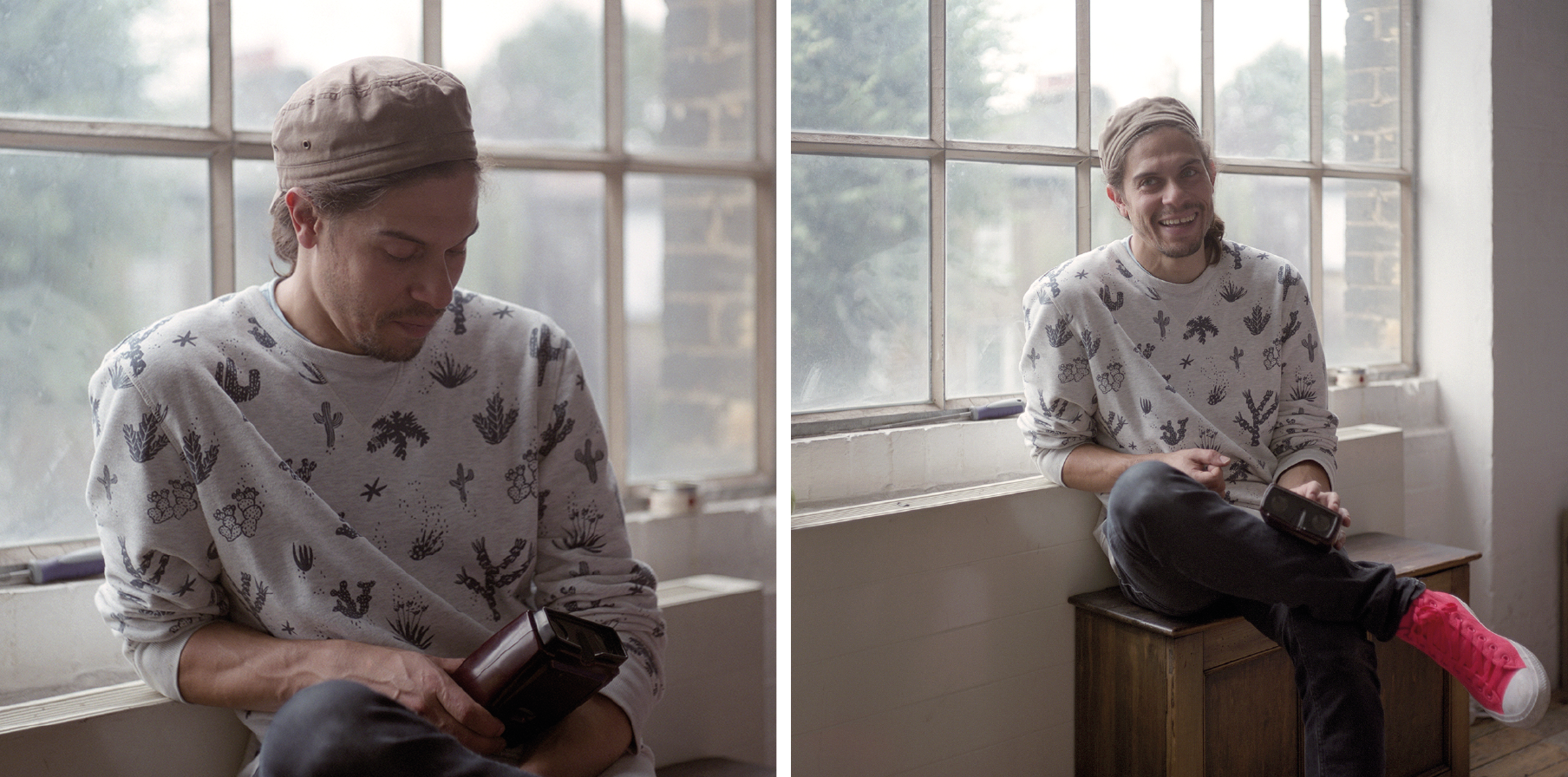Publication:
Photolocale
Role:
Author, Editor
Art Director
Shoot Coordinator
Team:
Chris Algar, Designer
Clare Hewitt, Photographer
Photolocale
Role:
Author, Editor
Art Director
Shoot Coordinator
Team:
Chris Algar, Designer
Clare Hewitt, Photographer
Antony Cairns spends much of his time stalking the city during the early hours. Due to the growing privatisation of public space, his twilight excursions have become the only way of capturing images without confrontation from patrolling security guards. His work primarily focuses on new urban developments, the buildings of which are rapidly replacing historical structures and casting new shadows across our city. Interestingly, it is those shadows which are so dominant in Cairns’ work, exacerbated by the fluorescent tubes so heavily utilised to both light and survey us at night. Using homemade chemical recipes, Cairns pushes and pulls his resulting transparencies to within an inch of their original likeness, coaxing out indexical signs left by the city. His buildings radiate a white-hot bleakness which burn their omnipresence onto the film without need for a camera, whilst beads of polluted grain pool and streak across the frame. It is as though one is peering through a glass fragment from the exact kaleidoscopic complex being photographed, an obsidian mirror image.
Exuding a detached cynicism, Cairns is not documenting contemporary architecture, instead, his caricatures of the city allude to narratives that would be more at home on the pages of the sci-fi novels he enjoys so much. Cairns’ work is perhaps best understood in two strands. Firstly; his archive of slides depicting the somewhat interchangeable landscapes of cities like London, New York and Tokyo; Secondly, his fervent exploration of process, and witty manipulation of varying materials and defunct technology to display his repository of images. Cairns repeatedly strips image from object, only to forcibly meld the two back together as lo-fi photo-objects. For his ongoing E.I. series, Cairns digitises his transparencies and uploads the files onto hacked first generation Kindles, where a current in the device stimulates the Electronic Ink, exciting it into different arrangements for text and image. Wrenching the screen out of its casing fixes the ink permanently within the glass, killing off any interface and creating glitchy digital daguerreotypes. Instead of existing as portals to communicate images, the screens solidify into inert photographic symbols.
View full article
Exuding a detached cynicism, Cairns is not documenting contemporary architecture, instead, his caricatures of the city allude to narratives that would be more at home on the pages of the sci-fi novels he enjoys so much. Cairns’ work is perhaps best understood in two strands. Firstly; his archive of slides depicting the somewhat interchangeable landscapes of cities like London, New York and Tokyo; Secondly, his fervent exploration of process, and witty manipulation of varying materials and defunct technology to display his repository of images. Cairns repeatedly strips image from object, only to forcibly meld the two back together as lo-fi photo-objects. For his ongoing E.I. series, Cairns digitises his transparencies and uploads the files onto hacked first generation Kindles, where a current in the device stimulates the Electronic Ink, exciting it into different arrangements for text and image. Wrenching the screen out of its casing fixes the ink permanently within the glass, killing off any interface and creating glitchy digital daguerreotypes. Instead of existing as portals to communicate images, the screens solidify into inert photographic symbols.
View full article
